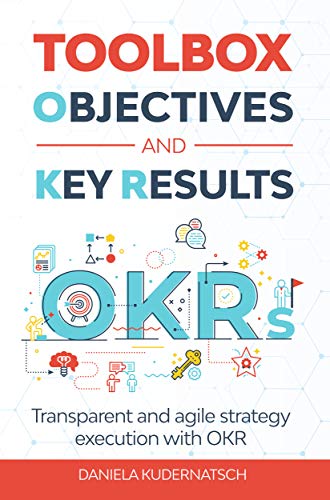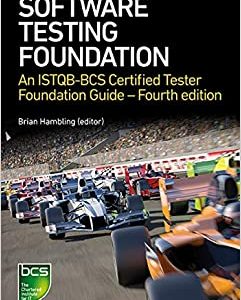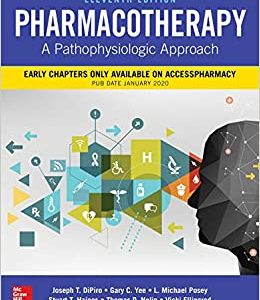Thus, the book is a practical guide for the introduction of the OKR method. It contains proven and practical tools in many places as well as methods developed over the years.
All chapters are characterized by practical examples as well as tips and suggestions for self-reflection.
The toolbox answers the following questions:
–How can OKR be distinguished from other management systems?
-How can few, significant company goals (breakthrough goals) be defined?
-The strategic planning process: Development of the "Business Strategy Canvas" (vision, mission, strategy, strategic goals)
-What are checkpoints for the planning process?
-Checkpoints for a "good" strategy as a starting point
-Linking strategy and OKR
-What is the difference between good and bad OKR?
-How does target alignment work in detail?
-What are different procedures to align goals?
-Breaking down OKRs
-Horizontal alignment: How can conflicting goals be resolved?
-What are the characteristics of Objectives and Key Results?
-Objectives: Formulation of good, meaningful and motivating goals
-Which OKR’s definitely not…
-Participatory development of goals (mix of top-down and bottom-up)
-Key Results: Determination of appropriate success indicators
-What are Do’s and Dont’s for Objectives and Key Results?
-Difference between lag and lead indicators
-How is the implementation process structured?
-What does OKR mean as a management tool?
-The standard process of OKR reviews
-Tips and tricks for a successful implementation
-What to do in case of deviations
-The retrospective at the end of an OKR period
-How do OKR reviews proceed at different levels
-What does leading and coaching mean in concrete terms?
-Finding a balance between leading and coaching
-Weekly OKR reviews and retrospective
-Challenges for managers
-Training tips for managers
-How can managers drive the process?
-How can the implementation process of OKR be made effective?
-What are the implementation strategies?
-How can commitment be generated by top management?
-What are common mistakes, hurdles and success factors
-What prerequisites and framework conditions must be created?
-How can OKR be linked to management systems such as Hoshin Kanri, Balanced Scorecard, Management By Objectives?
-What are the roles and tasks of the OKR Manager?
-How to control and manage the change process?
-How to create a flexible and unbureaucratic target process?
-How do we get all managers and employees on board?
-How do we deal with resistance?
-Integration of OKR into the operative business or daily business
-OKR and bonus/remuneration system
-Measuring the maturity of the organization
-Develop the change story ("change canvas")
-Actively managing the change process
Product details
- File Size: 6486 KB
- Print Length: 175 pages
- Page Numbers Source ISBN: 3000655190
- Publication Date: May 8, 2020
- Language: English
- ASIN: B088DC83J6
- Text-to-Speech:
Enabled

- Word Wise: Enabled
- Lending: Not Enabled
-
#269
in Corporate Governance -
#576
in Project Management (Kindle Store) -
#760
in Human Resources & Personnel Management (Kindle Store)











